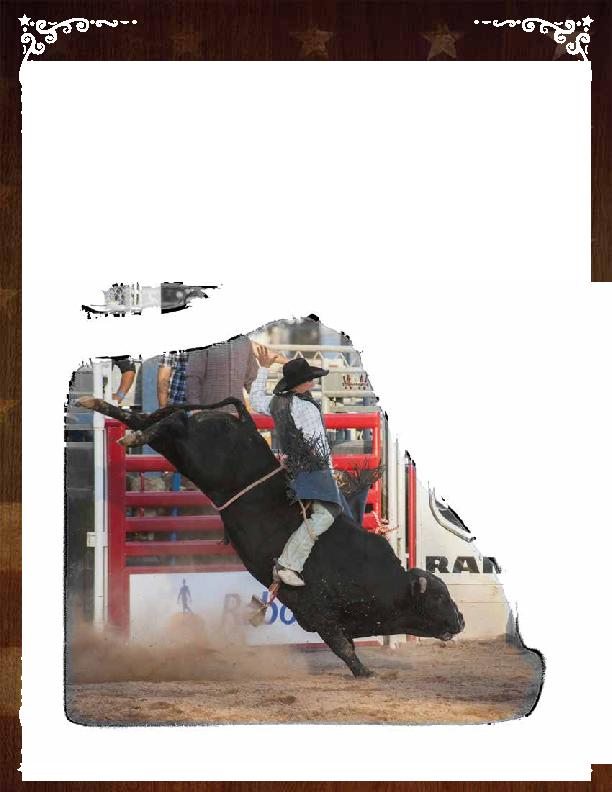
Brawley Chamber of Commerce
Brawley Cattle Call
53
Bull Riding
In the beginning, rodeo competition was a natural extension of the daily challenges
cowboys faced on the ranch- roping calves and breaking broncs into saddle horses.
Bull riding, which is intentionally climbing on the back of a 2000 lb bull, emerged from the
fearless nature of the cowboy. The risks are obvious. Serious injury is always a big possibility for
those brave enough to sit aside an animal that literally weighs a ton and is equipped with danger-
ous horns. Regardless, cowboys do it and fans love it.
Bull riding is dangerous and predictably exciting, demanding intense physical prowess,
mental toughness and courage. Like bareback and saddle bronc riders, the bull rider may use only
one hand to stay aboard during the eight-second ride. If he touches the bull or himself with his
free hand, he receives no score. But unlike the other roughstock contestants, bull riders are not
required to mark out their animals. While spurring a bull can add to the cowboy's score, riders are
commonly judged on their ability to stay aboard the twisting, bucking animal.
Balance, exibility, coordination, quick re exes and a strong mental additude are what a
good bull rider is made of. To stay aboard the bull, a rider grasps a at braided rope, which is
wrapped around th bull's chest just behind the front legs and over its withers. One end of the bull
rope, called the tail, is threaded through a loop on the other end and tightened around the bull.
The rider then wraps the tail around his hand, sometimes weaving it through his ngers to further
secure his grip.
Then he nods his head, the
chute gate swings open, and he and
the bull explode into the arena.
Every bull is unique in its
bucking habits. A bull may dart
to the left, then to the right,
then rear back.
some spin or continuously
circle in one spot in the
arena. Others add jumps
or kicks to their spins,
while others might
jump and kick in a
straight line or
move side to
side while
bucking.

